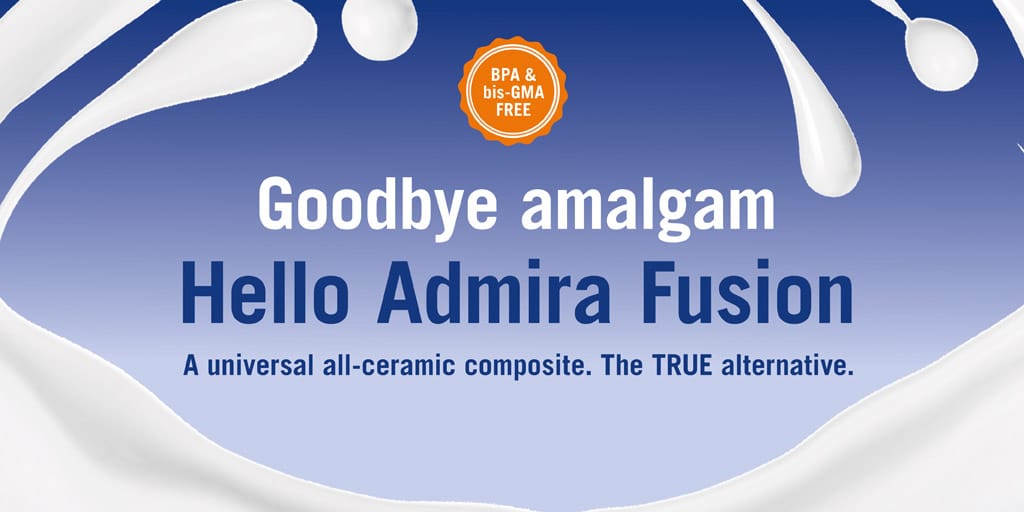Looking for the true alternative to amalgam
As the EU-wide phase-down of the use of dental amalgam begins in earnest, we look at why all-ceramic composites are proving to be the ideal replacement
In association with VOCO UK
As all dental professionals already know, July 2018 marked a defining moment in the EU dental industry with the initial stage of the EU-wide phase-down of the use of dental amalgam in fillings. This is the first step designed to implement the EU’s Regulation on Mercury, which is the union’s mechanism to ratify the Minamata Treaty of 2013, a global environmental treaty aimed at reducing the release of mercury into
the environment.
The immediate impact of the July deadline has meant that clinicians, including those in Scotland, can no longer use amalgam in the treatment of deciduous teeth, in children under 15 years of age or in pregnant or breastfeeding women, “except when deemed strictly necessary by a dentist based on the specific needs of the patient”.
As a consequence of the new EU regulation, every clinician, if they haven’t already done so, has had to find a viable mercury-free alternative to amalgam fillings. Dental manufacturers have been pioneering new materials to rival those containing amalgam and there is a wide choice of alternatives on offer. But what factors should clinicians be taking into consideration to find the most functional, durable and aesthetic mercury-free restorative material?
Considering the alternatives
Many clinicians consider that glass ionomers are a suitable alternative to amalgam. However, it is also argued that glass ionomers are not a clinically viable alternative to amalgam for a number of key reasons:
- Their use is primarily for temporary, small Class I fillings and as a liner.
- They are not strong enough especially for posterior fillings.
- Their low abrasive resistance makes them more likely to wear and eventually fracture.
- They do not match tooth colour as effectively as composite resin.
- Glass ionomers need to be applied and cured in thin layers and as a consequence lengthens treatment time.
With these points in mind, it’s worth considering the following in the search for a viable alternative to amalgam:
Is it a clinically-defensible alternative to amalgam? This means a composite material that can offer stability, longevity and aesthetics as a permanent solution, unlike glass ionomers whose inferior strength and low abrasion resistance means they should chiefly be used for temporary, small Class 1 fillings and as a liner.
Is it suitable for the whole family? If the search is on for mercury-free restorative alternatives for the under-15s and pregnant and breastfeeding mothers, why should this not be extended to treating the whole family? Using just one group of materials avoids the expense and inconvenience of using multiple systems as well as avoiding the strict amalgam handling and waste management requirements that are coming into force in 2019.
Is it an ethical and environmentally-friendly solution? The amalgam phase-down results from an environmental treaty. When this is combined with the increasing concerns of the impact of environmental exposure to classic monomers and their effect on patients, especially those suffering from allergies and asthma, it’s essential to provide materials that further reduce exposure to such harmful chemicals.
The case for turning to minimally invasive, all-ceramic composites as a permanent alternative to amalgam is – like the material itself – strong and able to stand the test of time. The Admira Fusion composite range offers nanohybrid ORMOCER® (ORganically MOdified CERamic) technology that significantly reduces the chance of microleakage due to the lowest polymerisation shrinkage (1.25 per cent by volume) and low shrinkage stress (up to 50 per cent lower compared to other composites). Free from all the classic monomers, including BPA and bis-GMA, they offer long-term stability combined with aesthetics and strength, but they handle just like a composite.
Taking the next step
Delivering outstanding long-lasting and durable direct restorations that are more than a match for amalgam fillings, all-ceramic composites offer a classic aesthetic, mercury-free alternative to amalgam. Ideally suited for simple or complex, anterior or posterior cases, and compatible with all conventional bonding agents, Admira Fusion is the strong, stable, functional and aesthetic solution for all indications.
To find out more about VOCO’s range of restorative materials, call your local VOCO Scottish Dental Consultant Lynda Steel on 07500 769615, email l.steel@voco.com or visit www.VOCO.social

Comments are closed here.